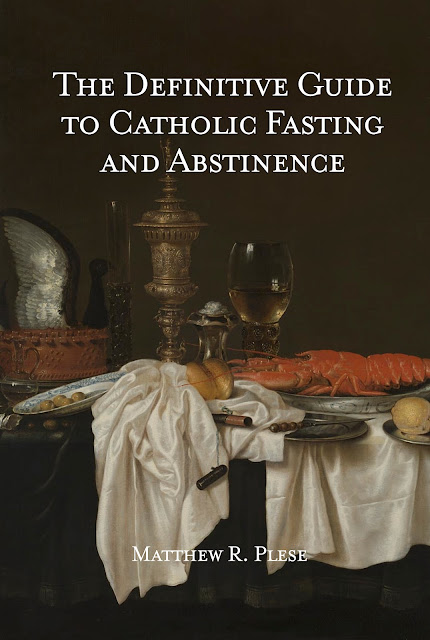The First Mass of St. John of Matha
Double (1955 Calendar): February 8The Order of the Holy Trinity was founded in the area of Cerfroid, some 80 km northeast of Paris, at the end of the 12th century. The founder is St. John de Matha. The Trinitarian Order and its Rule of Life were given church approval by Innocent III with his letter Operante divine dispositionis issued on 17 December 1198.
Throughout the centuries, the Trinitarian Rule has undergone several revisions, notably in 1267 and in 1631; it has been complemented by Statutes and Constitutions. From the very outset, a special dedication to the mystery of the Holy Trinity has been a constitutive element of the Order's life. The founding-intention (propositum) for the Order was the ransom of Christians held captive by non-believers during the time of the Crusades. Soon after papal approbation, the Trinitarian ministry to Christian captives was incorporated into the Order's title: Order of the Holy Trinity and of Captives ... Order of the Holy Trinity for the Ransom of Captives. In addition to the Order's purpose of ransoming Christian captives, each local community of Trinitarians served the people of its area. And so, their ministries included: hospitality, care of the sick and poor, churches, education, etc. Eventually, the Trinitarians also assumed the work of evangelization.
Brother John's founding-intention expanded quickly beyond the three initial foundations (Cerfroid, Planels, Bourg-la-Reine) into a considerable network of houses committed to the ransom of Christian captives and the mercy-works of their locales. The first generation of Trinitarians could count some fifty foundations. Fund-raising and economic expertise were important aspects of the Order's life. The Rule's requirement of the tertia pars (the one-third of all income to be set aside for the ransom of Christian captives) became a noted characteristic of the Order. The 13th century was a time of vitality and achievement. The following centuries, however, proved to be periods of difficulty and decline. The Council of Trent was a major turning-point in the life of the Church. Its 25th session dealt with regulars and nuns and the reform of religious orders. Reforming interests and energies manifested themselves among Trinitarians in France with the foundation at Pontoise, north of Paris, during the last quarter of the 16th century. Reform-minded Trinitarians in Spain first established the movement known as the Recollection and then, under the able leadership of John Baptist Rico (later, St. John Baptist of the Conception), the movement at Valdepeñas (Ciudad Real) known as the Spanish Discalced at the very end of the 16th century. Far-reaching periods of growth and development followed this rebirth.
In the more recent centuries, European events such as revolution and governmental suppression and civil war have had very serious consequences for the Trinitarian Order. During the last decades of the 19th century, the Trinitarian Order began to rise slowly in Italy and Spain from its collapse. Its members dedicated themselves to fostering and promoting devotion to the Holy Trinity, to evangelization among non-believers, to spiritual assistance for immigrants, to education and to pastoral ministry in parishes. Today the Trinitarian Family is composed of men (priests and brothers) and of women (cloistered nuns and active sisters) as well as committed laity. They are distinguished by the cross of red and blue which dates from the origins of the Order. Trinitarians are found throughout Europe and in the three Americas as well as in Africa and Madagascar, India, Korea, China and the Philippines.
As for the Trinitarian liturgical usage(s), the 1198 Rule of Life says that we are to follow the usage of the Paris Abbey of St-Victor. The Spanish Discalced Rule of 1631 (post-Trent) says that we are to follow the usage of the Holy Roman Church. There are some medieval missals and breviaries of the Order but no one has done a full study of them.
Fr. Joseph J. Gross, OSST of the Trinitarian Historical Institute
Collect:
O God, through St. John You founded the order of the Holy Trinity to ransom captives from the oppression of the Saracens. By Your grace keep our souls and bodies free from any enslavement, through the prayers of Your saint. Through Our Lord . . .








1 comment(s):
Remarkable. Excellent article.
I looked at their website and see they are growing especially in Poland.
I had no idea that the Trinitarians were still in existence. I thought they were like the Gilbertines who simply died out.
Thanks.
In caritate Xp.,
Bryan
Post a Comment